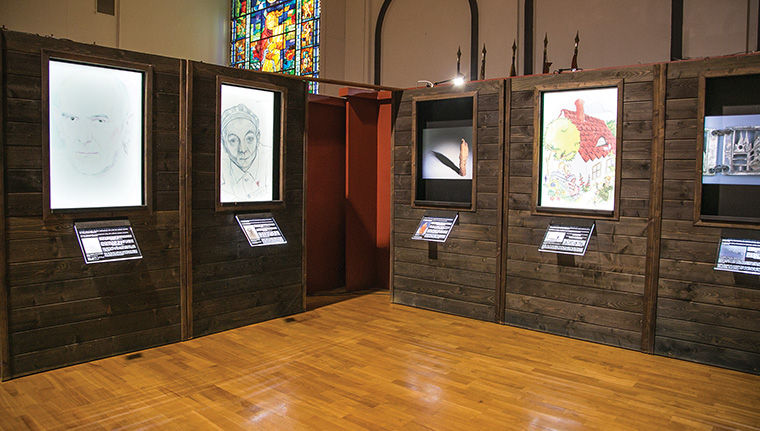Exhibit explores secret art created by concentration camp residents
“Forbidden Art” is a new exhibit that shows the hardships and terrors of life in concentration camps during World War II through the eyes of prisoners who created the art.
November 10, 2014
An exhibit featuring 20 works of art made by prisoners in concentration camps during World War II will be showcased at the Polish Museum of America, 984 N. Milwaukee Ave.
The exhibition, titled “Forbidden Art,” is a cooperative initiative between the Auschwitz-Birkenau State Museum in Poland and The Polish Mission of The Orchard Lake Schools in Michigan. The exhibit has traveled across the U.S. since 2012 and will move to the United Nations headquarters in New York City after it concludes its run in Chicago in January 2015.
Each work was made in secret by prisoners in concentration camps during the war. The pieces document the reality of life in the concentration camps, including caricatures and illustrations of fairy tales by prisoners for their children.
Marcin Chumiecki, director of The Polish Mission of The Orchard Lake Schools in Michigan, wrote in the guidebook for the exhibition that the pieces were chosen specifically from more than 2,000 pieces of artwork in the collections of the Auschwitz-Birkenau State Museum. The pieces invite guests to experience a degree of intimacy with the imprisoned people who created the works and with the experience of being in a concentration camp.
Maria Ciesla, president of the Polish Museum of America, said it’s special for the museum to have such a moving exhibit on display.
“[The exhibit is] important because it’s the works of Christian and Jewish concentration camp prisoners, which means a lot to us because Poland was despised as much as the Jewish people by Hitler and it was to be eradicated off the face of the earth,” Ciesla said.
Joseph Drobot, president of the Polish Roman Catholic Union of America, said the pieces in the exhibit are only a few of the works of concentration camp art that are owned by the museum in Poland.
“[The pieces in this exhibit were] put together to represent the will to live that these individuals had, even though they knew they were going to die,” Drobot said. “It shows all different emotions, too. You have the tragedy, the representation of how bad the life was. But then you have the storytelling.”
Both Ciesla and Drobot said that walking through the “Forbidden Art” exhibit is a sobering experience for viewers. What prisoners actually experienced has not been communicated adequately to younger generations, and the exhibit should help them understand more accurately, Drobot said.
“It’s the resilience of the human spirit that is among us [in the exhibit],” Ciesla said. “You feel much different in this exhibit than you do outside of it. You just feel how you do walking through the gates of Auschwitz.”
One of the pieces in the exhibit titled “Our Biographies” was created using a pencil and ink. The head of each body is a fingerprint from different prisoners that were being kept at the Buchenwald camp. Every fingerprint is accompanied by five thick pencil lines, symbolizing the camp uniforms. The piece was created by Józef Szajna.
It was illegal for the prisoners to create art and they ran the risk of getting caught, which would have led to execution. But it was important to them as a creative outlet, Ciesla said.
“[The prisoners created art] because it was to prove to themselves that they are still alive,” Drobot said. “They wanted to leave a legacy, they wanted to document something, but it was an escape from the reality and the harshness of the experiences they were going through. They still had that desire to live and create.”
Drobot said exhibit visitors should try to imagine the individuals who created the art and did not let the concentration camps dim their spirits.
“Their creations were a temporary moment of intellectual and creative escape but a lasting memorial for us of man’s will to live, even under the most unimaginable conditions,” Drobot wrote in the exhibition book. “To those we owe a lasting debt of gratitude and the promise of ‘never again.’”








